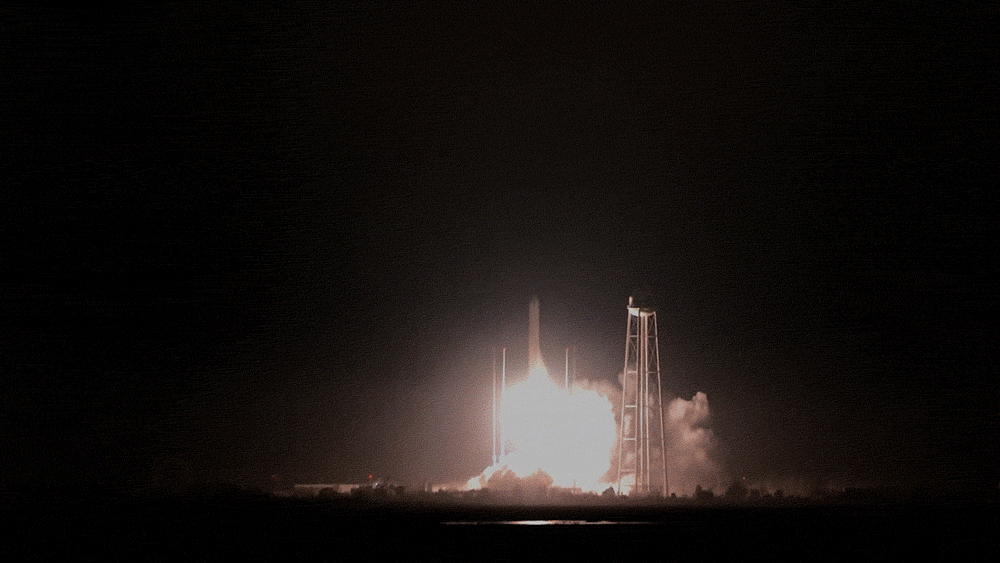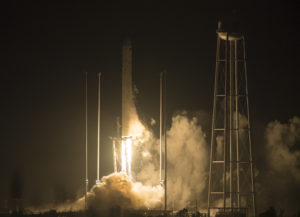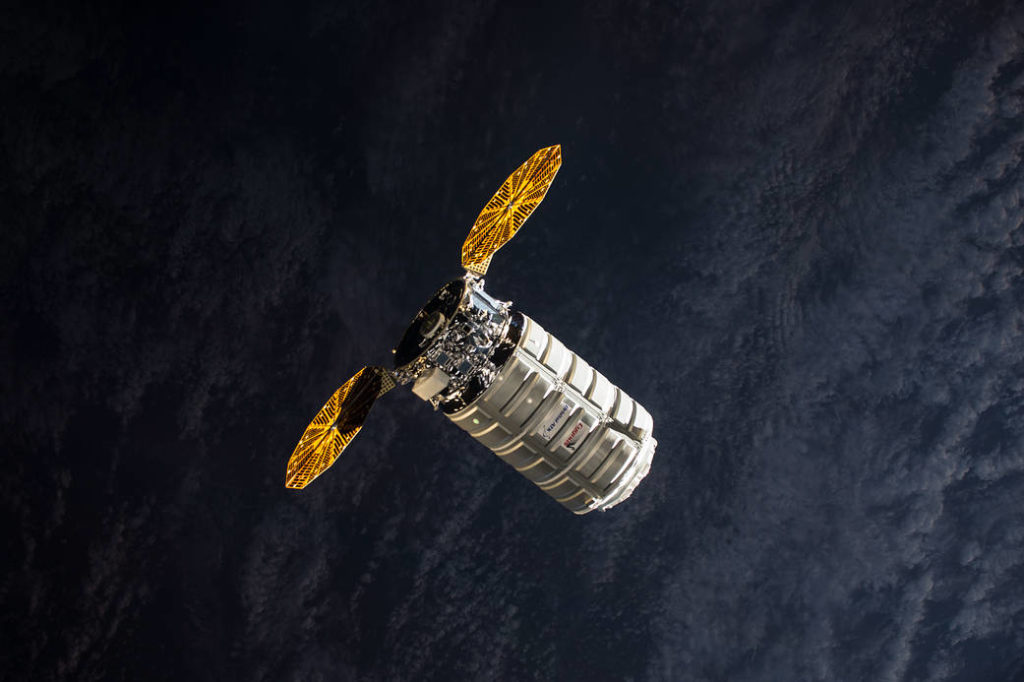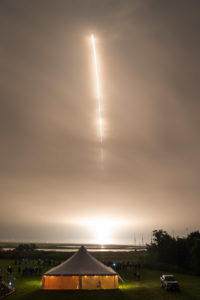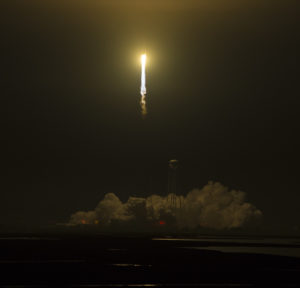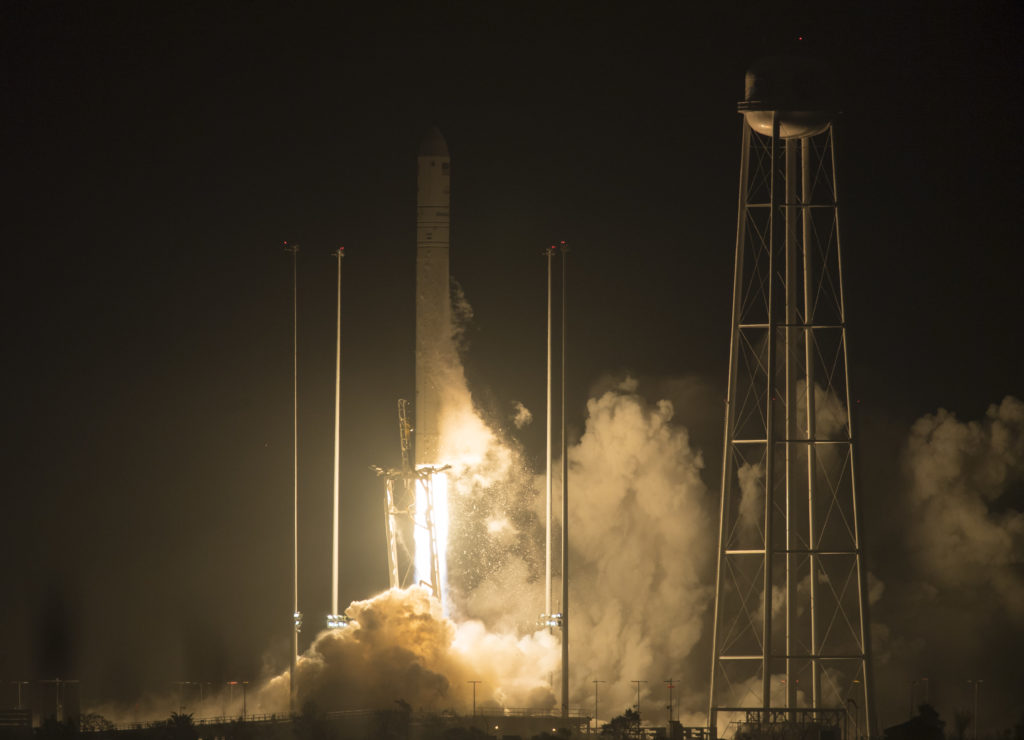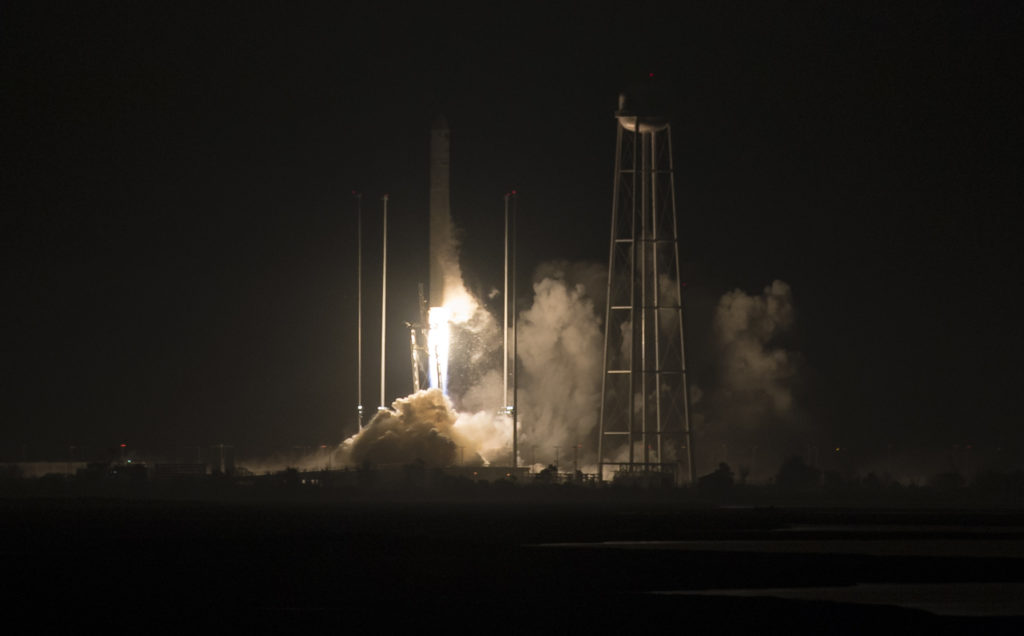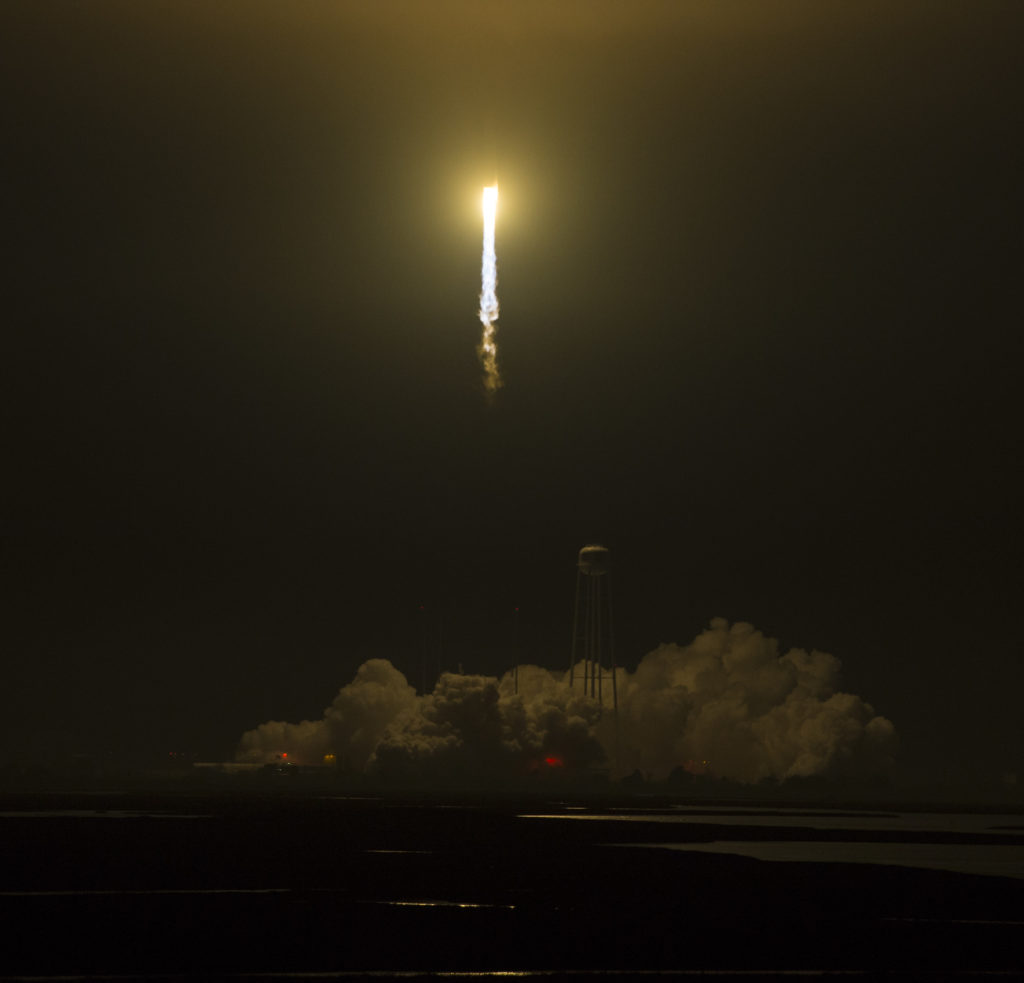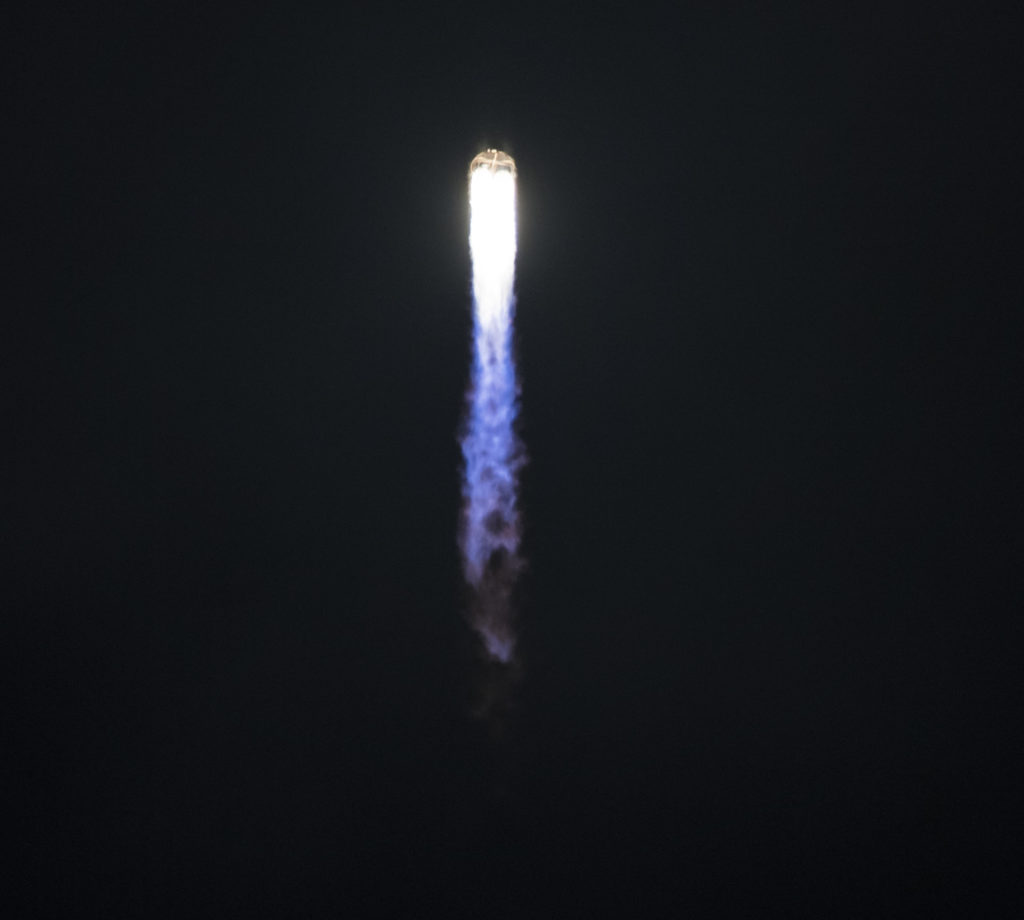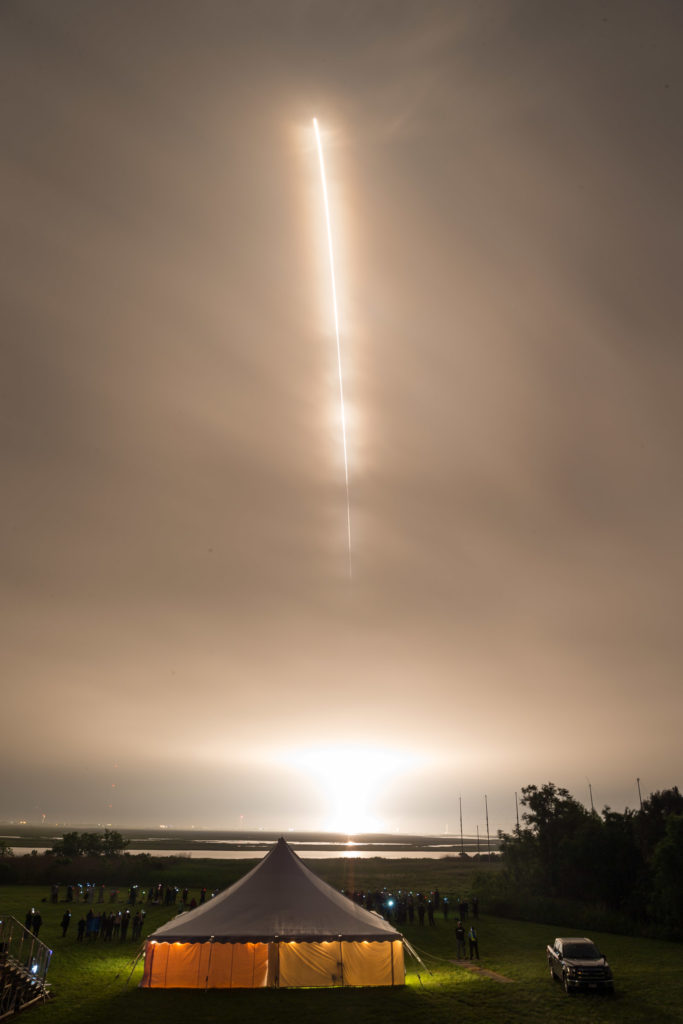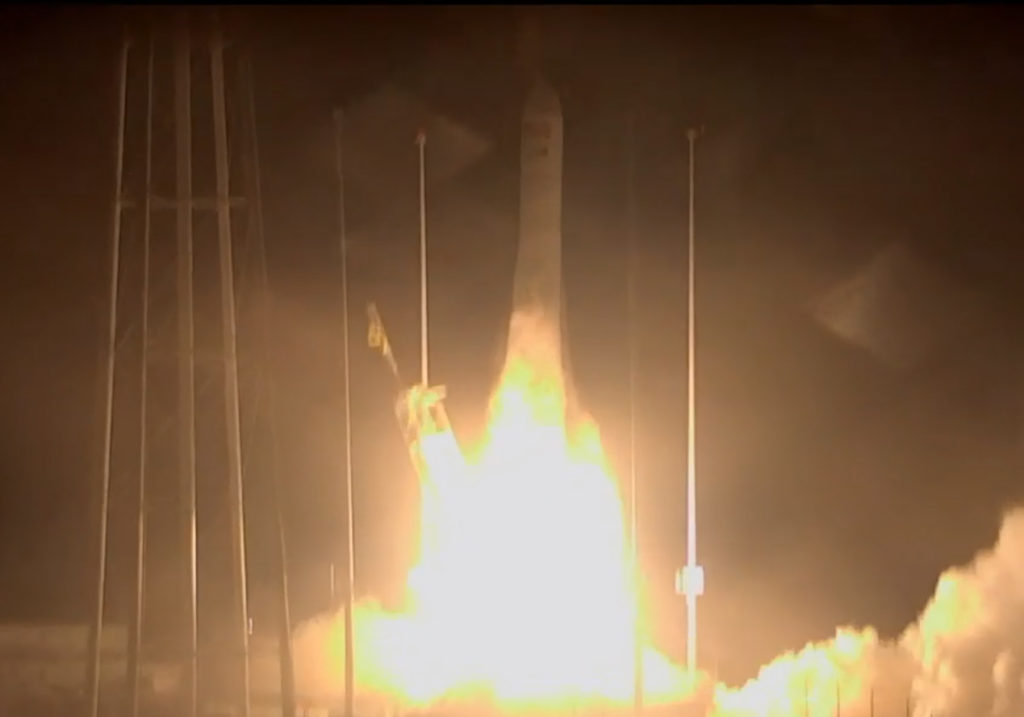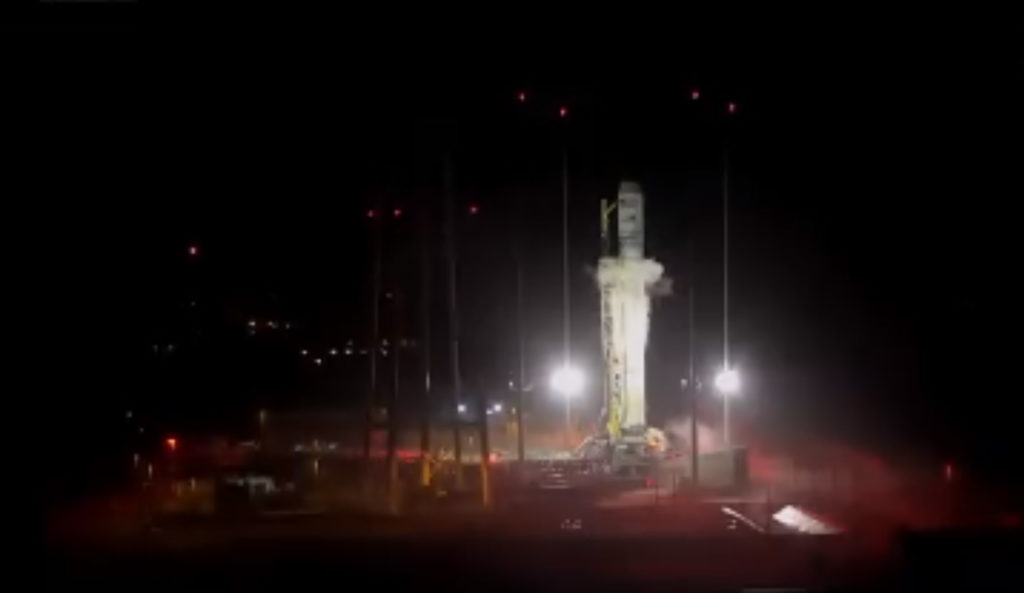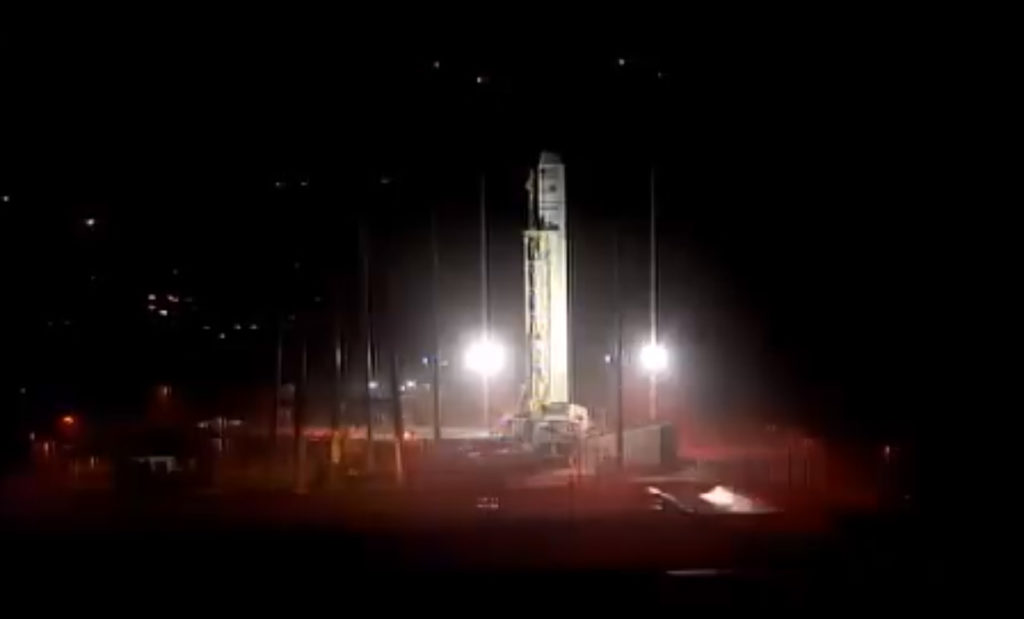Video Credit: Optical Systems Group, NASA’s Wallops Flight Facility
Orbital ATK’s Cygnus cargo spacecraft lifted off aboard the company’s Antares rocket at 4:44:06 a.m. EDT May 21, 2018, from Virginia Space’s Mid-Atlantic Regional Spaceport at NASA’s Wallops Flight Facility on Virginia’s Eastern Shore. The International Space Station-bound Cygnus was loaded with about 7,400 pounds of supplies and payloads, including critical materials to directly support dozens of the more than 250 science and research investigations occurring during the space station’s Expeditions 55 and 56.
The three video sequences above show the CRS-9 launch from remotely operated cameras at the pad (sequence Nos. 1 and 2) and a camera operated at a viewing site a few miles away (sequence No. 3).
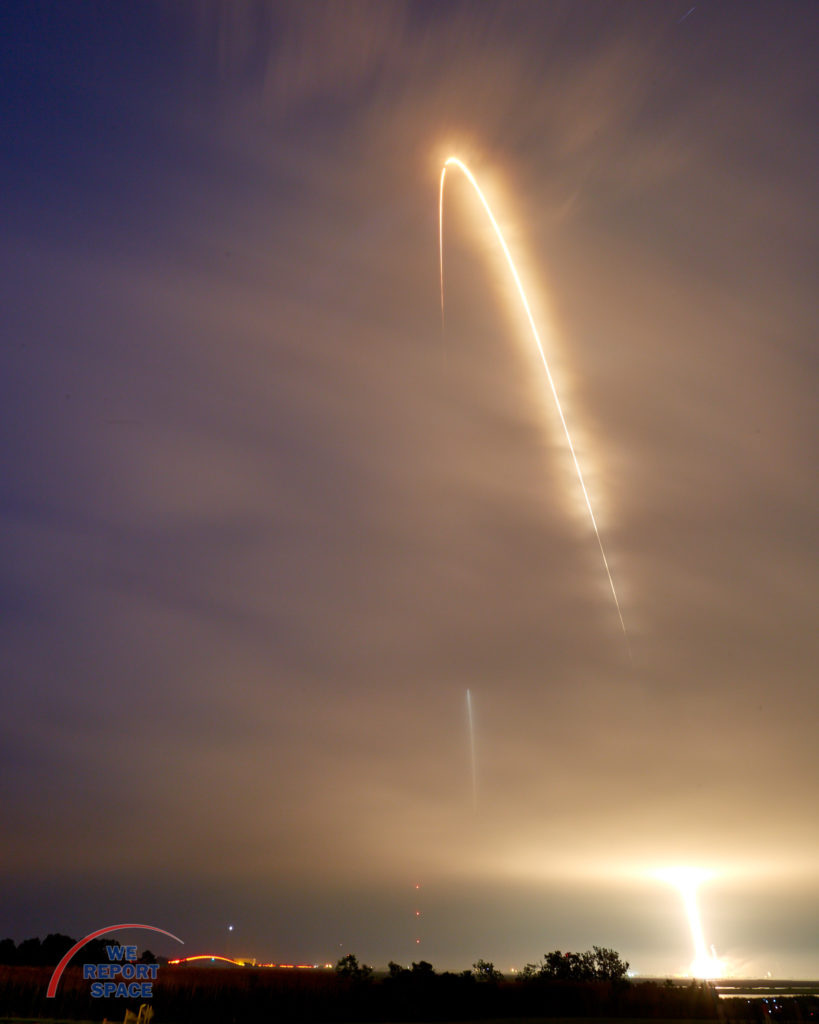
it’s a 5 minute, 56 second exposure shot on a full frame Canon camera with a 17-40mm lens. The camera was set at ISO100, f/16 and bulb mode, requiring the use of a sturdy tripod and a remote shutter release cable to prevent any shaking or blur of the image. In order to prevent the launchpad from being too overexposed, the picture was actually started a few seconds after ignition, as the rocket began to clear the transporter-erector-launcher. Past experience at Wallops told me that the rocket would appear to travel “right to left” at launch, and that the second stage should be visible about four minutes into flight. The early morning launch meant the second stage would be illuminated by the sun even while our viewing location was still in the pre-dawn darkness.

